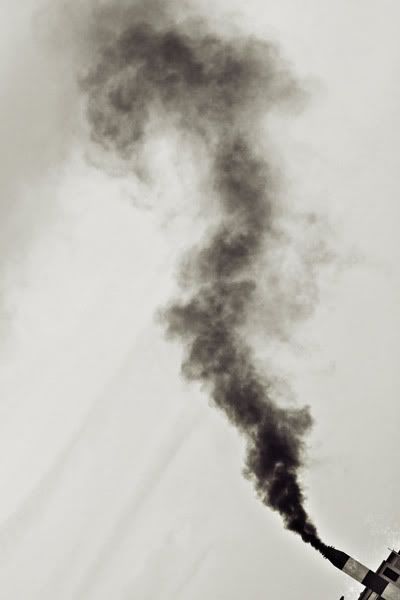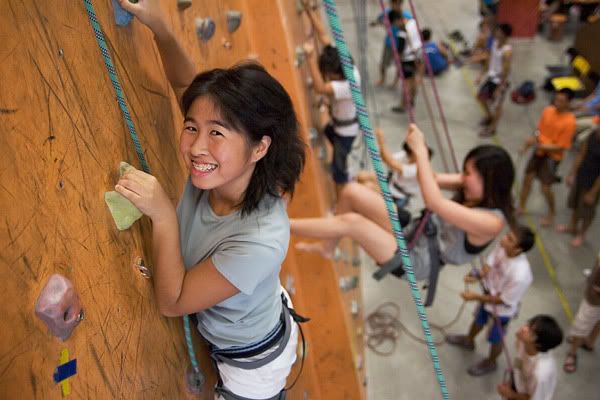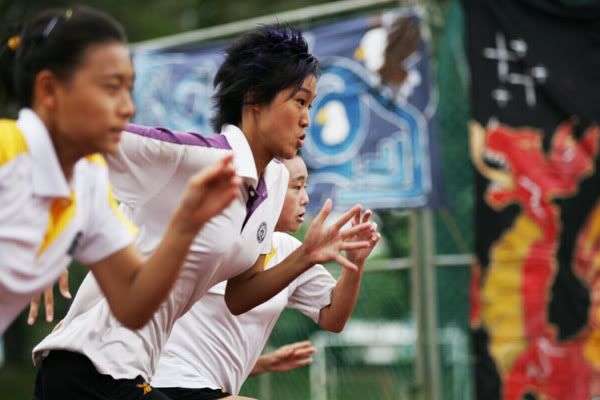Here's a recent photo which I forgot to post. Noticed this little plume of smoke coming out from Changi Prison, the cookhouse must be having a BBQ or something.

PIME 11: What's In the Background
One of the things about great photos is that everything that's in the frame is meant to be there. Nothing is in there for fun or by accident. When a good photographer makes a picture, he/she will take into account everything within the four walls of the photo and make a snap decision on whether to include that element or not. If you've done photoshoots with me, you'll realise that I'm about to take a photo when I suddenly stop, walk forward, and remove a piece of tissue on the grass. Why? The piece of tissue is very small, but does it contribute to the photo? Of course not! The trick is to let your eye roam around the image in the viewfinder or on your lcd before making the shot. Sometimes you don't realise me doing it because as you get proficient at it, it's so fast that it takes less than a second to do so. This is the reason why I can find little details quickly in a scene by looking at it. I notice minute details, because I've trained myself to do so. This isn't an innate capability, it can be learnt.
With compact cameras, one of the limitations is that you always have an incredible amount of depth of field(ie. the area in focus) due to the puny lenses that are mounted on a compact camera. Essentially, the smaller your camera's sensor, the shorter the focal length of your lens(this is the mm value on the lens) and the smaller the aperture(the larger the fx.x value on your lens, the smaller your maximum aperture), the more depth of field you're going to get. The problem with this is that your background will typically be in focus and hence you have to pay lots of attention to what you're putting in it. With digital SLRs, or compact film cameras, the lenses used are typically around 18-200 mm, whereas on a compact, you'd typically get lenses that range from 5-17mm. Hence, with digital SLRs and compact film cameras, it's much easier to blur out the background with low DOF and it's not extremely important what's in it, as long as there are no distracting colours or light sources. However, with a large DOF, you will often find people lurking in the background of your group photo if you're not careful.
So you have a small digicam and can't blur out the background. You're sunk. Wrong! You just have to wait till the background is clear or you have to find a suitable background which is relatively clean. Street photographers often use small apertures to photograph because they want a large DOF in order to place their subjects in their environment, but they control their backgrounds just as superbly. The trick is always looking out for it. If you look out for it, you won't miss it.
The background is essentially an integral part of a photo, and should be used well. Sometimes, you don't want to use the background, but the following are examples where the background is extremely useful and contributes greatly to the picture.
Here, Yvonne is the main subject, but Deb and the other SSS climbers also play a great role in showing the fun everyone is having. They are equally important. Without them, this photo of Yvonne would be dead boring.

This is a simple shot of a 100m race on sports day in VJC. However, choosing a spot where I could get the house banners in the background made this shot come alive, because I now have the context under which this photo was shot. It's not just a shot of the runners of a 100m race, but a 100m race at VJC sports day, a competion between houses.

Without the background these pictures would be worthless trash; that's how important the background is. Learn to use it, and use it well, for this is essential to making great images.

